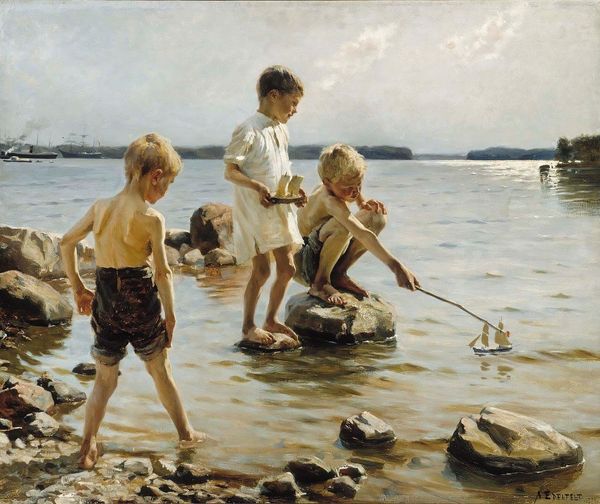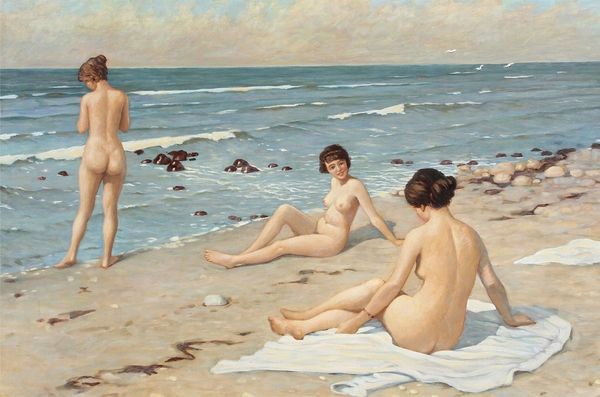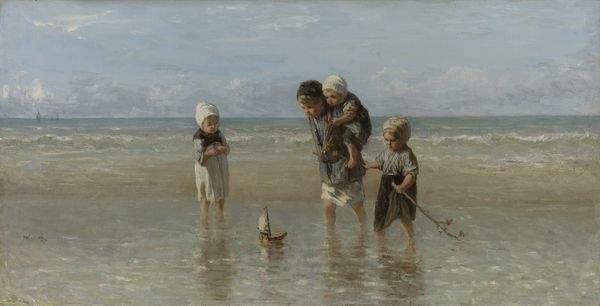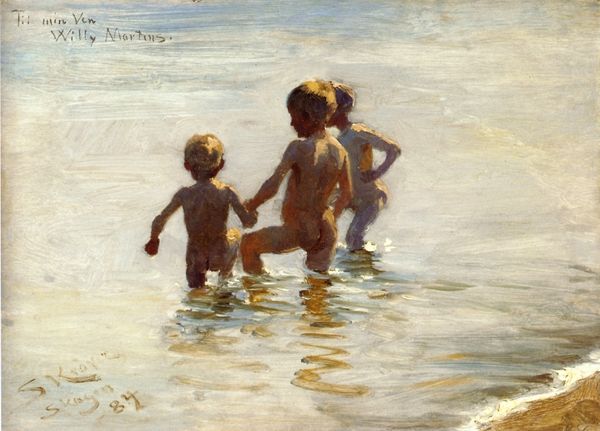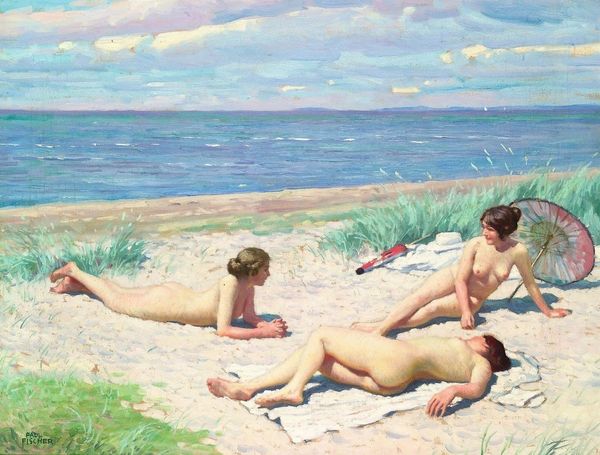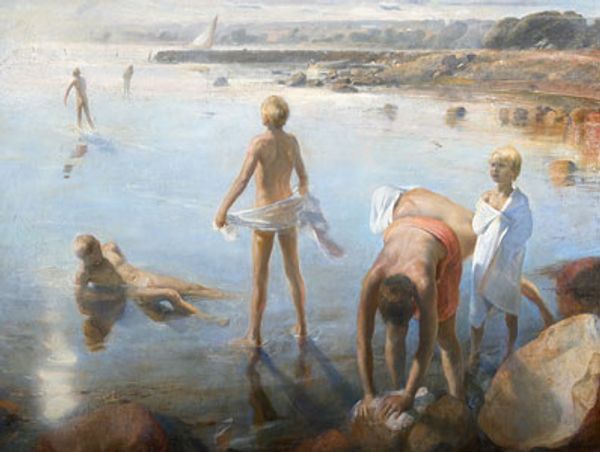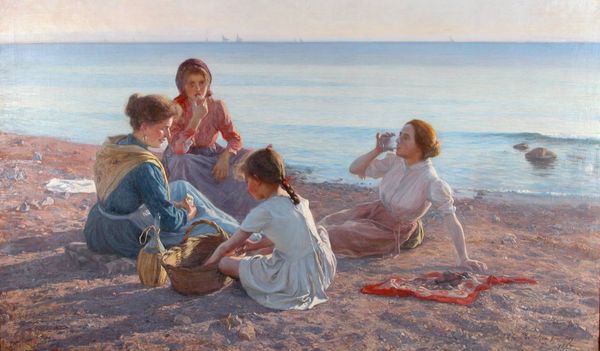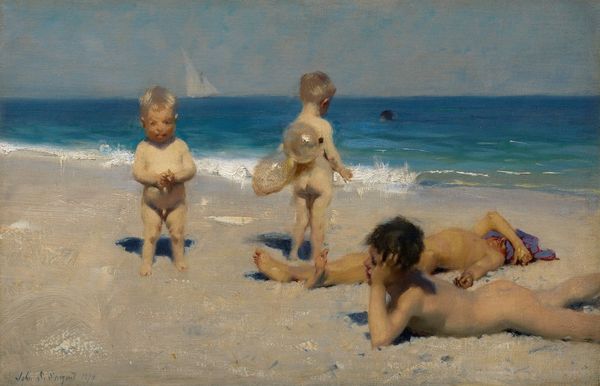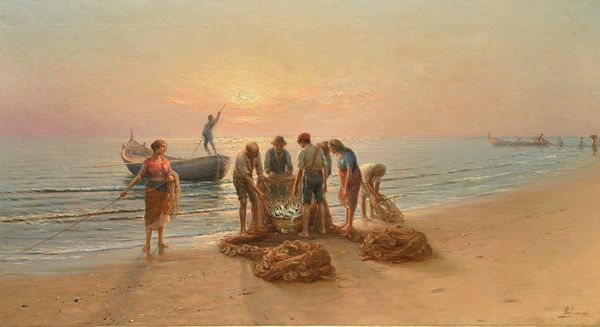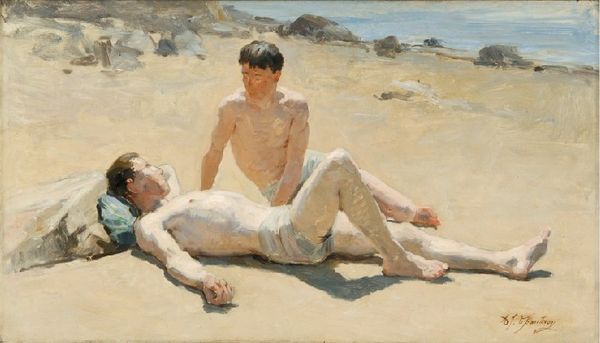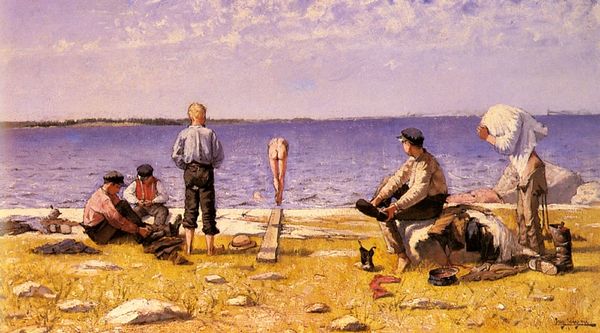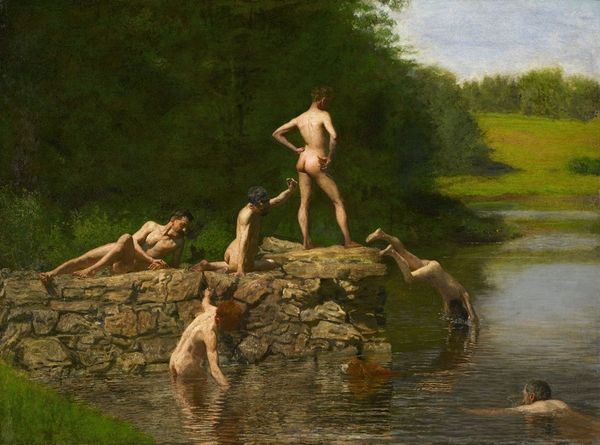
Dimensions: 33 9/16 x 58 1/8 in. (85.25 x 147.64 cm) (canvas)39 1/2 x 69 3/4 x 2 in. (100.33 x 177.17 x 5.08 cm) (outer frame)
Copyright: Public Domain
Curator: This is Alexander Grinager's "Boys Bathing," painted in 1894. You can find this oil-on-canvas gem here at the Minneapolis Institute of Art. Editor: Well, aren't they a carefree bunch! I see summer etched in every brushstroke. A hazy day, golden sand, the glisten of water. I’m already feeling that sun-drenched lethargy that only summer vacation could deliver as a child. Curator: Grinager certainly captured that feeling. What makes this particular plein-air painting interesting is how it plays into, and slightly subverts, the traditional genre scene. It shows an idealized vision of boyhood, free from the constraints of industry or labor. Editor: You say idealized, I see real! There's a fascinating blend of vulnerability and awkwardness, especially in their postures. One boy is still in overalls looking nervously out at the viewer as two of the other boys are still clothed. There's the languid one on the beach who seems the most at ease. They remind me of a Renoir painting of rosy fleshed bathers with that distinct impressionist color. Curator: The choice to paint them nude in a natural setting evokes classical ideals. However, Grinager introduces this distinctly American element. Instead of nymphs in Arcadian settings, these are everyday boys enjoying a swim, reminding me of Thomas Eakins' bathers. Editor: Yes! A touch more wholesome than Eakins perhaps? Though even in 1894, a work like this wouldn't have been without its controversies I assume. It's easy to forget that now. Curator: Absolutely. There was always that tension. But I also think Grinager presents something truly joyous and democratic in the imagery of youth here. Editor: Exactly, an escape. Looking at it, I imagine myself on that bank. I can almost feel that grit between my toes again. What a delightful portal to summer's idyll. Curator: It offers more than a mere idyllic scene, but a glimpse into societal constructs about childhood and the portrayal, even the construction of innocence at a pivotal point in American history. Editor: In the end, it just feels deeply human, a slice of time. Curator: It definitely makes you reflect on how much, and how little, those notions have changed.
Comments
minneapolisinstituteofart almost 2 years ago
⋮
Born and raised in Albert Lea, Minnesota, Alexander Grinager pursued a career in art at an early age. In 1867, he enrolled in the Royal Academy of Copenhagen, Denmark, and after finishing his training there, he moved to Paris. In 1894, he returned to Minnesota, renting a studio on Nicollet Avenue in Minneapolis. After only two years, he moved to New York at the urging of several artist friends, who suggested he would find greater fortune in the city. Ironically, it was his painting Boys Bathing that established Grinager's reputation and earned him the greatest critical acclaim of his career - and it was painted in Minneapolis. Grinager's picture depicts a group of boys in various stages of undress about to enjoy the cool waters of the Mississippi River on a sunlit summer day. According to Grinager, the location is the river flats below the old Washington Avenue Bridge, near a shanty town known as Bohemian Flats, built by Scandinavian and Irish immigrants. Nearby was an old stone quarry, which served as a welcome playground for the neighborhood boys. The conventional artistic subject of bathers has been used by artists over the centuries as a means to study the human figure in a range of poses. Boys Bathing recalls the informal realist depiction of male nudes, best exemplified by Swimming by Thomas Eakins. Grinager's approach to the subject, however, is more candid and spontaneous, and his depiction of unidealized immigrant children looks forward to the urban realism of the Ashcan School.
Join the conversation
Join millions of artists and users on Artera today and experience the ultimate creative platform.
